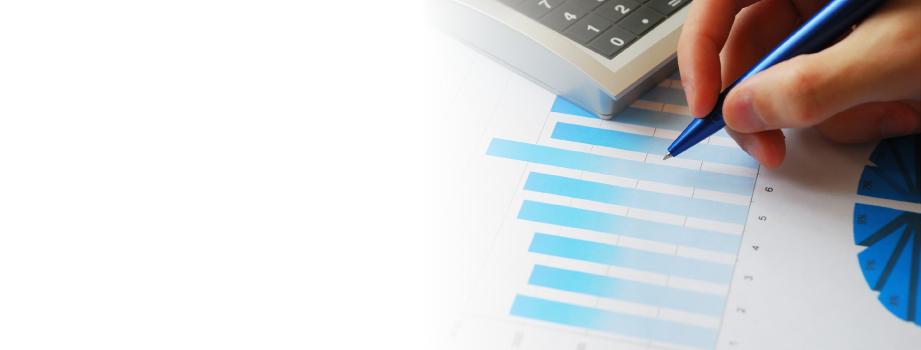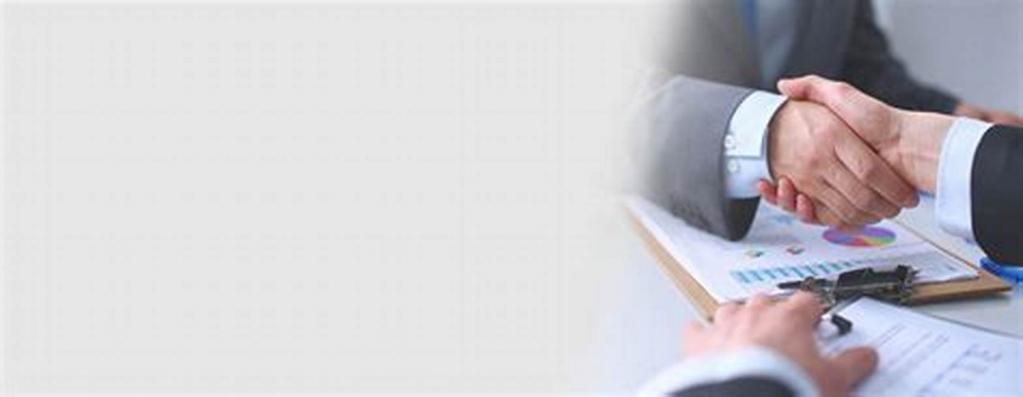All property complexes of the enterprise that are used in the organization of accounting for fixed assets, one way or another, are endowed with specific cost indicators. This is necessary to achieve the goals of not only accounting, but also to some extent tax accounting. In the process of operating assets in current activities, it is mandatory to reassess fixed assets on a regular basis. In this article, we consider the concept, types of valuation of fixed assets in accounting, its methods and other equally important aspects of the topic.
What it is?

To begin with, it is advisable to define the concepts and main directions of the studied category. Valuation of fixed assets in accounting involves the reflection of the value of the property of an enterprise or organization in cash. It should be noted that not all material values are considered the main means of structure. For this a certain condition must be fulfilled. So, the main assets in accounting 2017 are those whose useful lives are at least 1 year. It must be added that, in accordance with the rules of the accounting policy of the enterprise, another criterion for the period of service can be established.
What is the assessment?
According to generally accepted rules, the valuation of fixed assets in accounting consists in identifying the cost indicators of certain varieties of property complexes belonging to the enterprise. It should be added that the main points of the event include the following points:
- Accounting main means of structure.
- Analysis of both qualitative and quantitative properties of material values of the organization.
- Among the goals of accounting for fixed assets, it is important to note the implementation of transactions with property assets that are of a civilian nature. This may be, for example, the transfer of assets for temporary use in accordance with a lease to third parties.
- The use of cost properties for the formation of forecasts and economic calculations in the company.
- One of the goals of the assessment of fixed assets in accounting is the assessment of the condition of objects and objects for the timely implementation of repair and restoration operations.
- Assessment of the effectiveness of the use of property complexes of the enterprise in current activities. This also includes determining the feasibility of the sale of these assets in order to reduce current maintenance costs.
- And finally, the valuation of fixed assets in accounting is performed to provide statistical reports. Documentation, as a rule, is sent to authorized structures and departments.
Before studying the varieties of evaluation, it is advisable to note one nuance. During operation in the current period, estimated indicators will also be used to calculate depreciation of fixed assets in accounting. It must be added that in some cases, the company may use depreciation information in order to reduce income tax.
Varieties of assessment

To date, there are the following types of valuation of fixed assets in accounting:
- Initial assessment. This variety involves the formation at the time of entry into operation at a particular enterprise.
- Recovery assessment. Here we are talking about the cost of fixed assets in accounting in modern conditions, with current technology and prices.In other words, this is the cost at which the asset is valued after the revaluation.
- Residual estimate. This is the initial cost of property, plant and equipment in accounting, less the amount of current depreciation. It is necessary to add that it is at the residual value of the DOS. funds are displayed in the balance sheet.
Modern classification
The basic price indicator of fixed assets in accounting and tax accounting 2017 is their initial cost. It is this value that is entered into the accounting data in the process of registering assets, as well as putting them into operation. The initial cost can be calculated using one of the following ways:
- When accounting for assets that are included by the owners of the enterprise as contributions to the authorized capital. In this case, the initial cost is determined by the founders themselves.
- When conducting transactions related to the acquisition of assets, the calculation is made in accordance with market prices or on the basis of contractual obligations and conditions existing between counterparties.
- The initial cost of fixed assets in accounting can be calculated in the production of valuables of a material nature in-house. Here, the calculation is carried out taking into account the costs incurred. A vivid example in this case is the construction of a new immovable property.
Book value

It must be borne in mind that, in accordance with the Regulation on Accounting, fixed assets can be accounted for through another option. It is a book value of assets. This estimated indicator is formed according to the accounting information on the presence and movement of property assets in the company. It can take into account data on replacement cost. It should be added that the full replacement cost includes the creation of costly amounts associated with the formation or creation of new values of material nature. Based on the mentioned evaluation indicator, the company regularly determines the residual value. For this, actual or regulatory data regarding depreciation of property assets are applied. It must be borne in mind that the residual value organizes an assessment of the normative or actual depreciation of valuables of a material nature, which allows you to plan the appropriate repair and restoration work or modernization in time.
Indicators

With various methods of accounting for fixed assets, general and private indicators can be used. Their use allows you to identify the efficiency of operation of the property of the enterprise in current activities. As well as the profitability of production processes and other information. Key assessment indicators currently include the following:
- Return on assets is nothing more than the ratio of the volume of the manufactured product to 1 ruble of the value of fixed assets.
- Capital intensity is the percentage of fixed assets per 1 ruble of the product produced.
- Profitability is the amount of profit per 1 ruble of the main assets of the company.
In addition to those presented today, indicators of the effectiveness of the use of property complexes are widely used. For almost every version of the initial or subsequent assessment of the OS, as a rule, their own varieties of normative formulas are used. It should be noted that for subsequent revaluation of fixed assets, the availability of cost data at the beginning of the calendar year (usually they can be found in the statements), design and estimate documentation, as well as technical passports for real estate and other technical documents for production equipment and materials are required.
Methods of valuation of fixed assets in accounting

In accordance with generally accepted rules bang.accounting, the valuation of assets of an enterprise having a property character as fixed assets is carried out according to the following criteria:
- Original cost.
- Replacement cost.
- Residual value.
It is advisable to dwell on each of them individually. As a rule, there are no difficulties in calculating the initial cost. For this, information on the purchase of objects or the costs of their formation is used. In addition, market price information may apply. It is worth noting that in some cases an increase in the initial cost is permissible. We are talking about the completion or reconstruction of the basic object of the property apparatus, as well as the liquidation of part of a certain asset of the enterprise.
In accordance with Article 257 of the Tax Code in force on the territory of the Russian Federation, the initial value should be understood as the cost, which is the sum of the expenses upon the fact of acquiring or erecting fixed assets, including the costs of their installation and delivery, as well as other expenses necessary for achieving results. At present, the initial cost can be defined as the amount of expenses for the acquisition of fixed assets (when a particular fixed asset is received on a gratuitous basis, as the amount in which this property asset is valued in accordance with paragraph 8 of Article 250 of the tax legislation), manufacture, construction, completion to the necessary and usable condition and delivery, with the exception of tax amounts that are deductible or are included in the composition of expenses in accordance with Article 170 of the Tax Code.
Replacement cost
In order to calculate the replacement cost of property assets, the following methods are currently used:
- Regulatory price indices for specific types of property assets of the company.
- Coefficients of price changes in the market.
- Prices for similar types of assets when the replacement cost was previously determined for them.
Residual value

It is worth noting that the data calculated by the methods indicated in the previous chapter are used to identify residual value. This takes into account depreciation of equipment or other varieties of company values that are material in nature. It is important to note that the residual value can be determined by subtracting the amount of depreciation from the initial estimates or through the use of standard depreciation indicators. In addition, today in accounting quite widely used correction factors for depreciation amounts, which are determined in accordance with certain types of property assets of the enterprise.
This means that the residual value of fixed assets that were put into operation before the entry into force of chapter 25 of the Tax Code in force in the Russian Federation is interpreted as the difference between the replacement cost that we examined above and the depreciation amount determined in accordance with paragraph 5 of paragraph 1 of Article 257 of the Tax Code RF It is important to note that the residual value of depreciable property of the enterprise, the depreciation of which is carried out using the linear method, is currently determined by the following formula: B = B x (1 - 0.01 x K) P, where B is the recovery (initial ) the value of the property of the enterprise or organization; P - the number of full months that have passed from the date of entry of these objects into the corresponding depreciation group until the day they are excluded from there (it must be added that in this case it is not advisable to take into account the period calculated in full months during which such property objects were not included in the composition depreciable property complex in accordance with paragraph 3 of Article 256 of the Tax Code in force in the Russian Federation); K is the depreciation rate.
Revaluation of fixed assets. Conclusion

It is important to note that amendments to the initial cost of property assets of an enterprise are only allowed today in exceptional cases. It is advisable to consider the main ones. So, a change in the qualitative or quantitative indicators of DOS should be determined. funds.It is necessary to add that the following are the most common cases of revaluation:
- Revaluation of a whole group of assets of a homogeneous plan at the end of the reporting period to correctly account for the current cost indicator.
- Increase in OS value due to additional equipment, completion, reconstruction and so on.
- The decrease in the value of these property assets of the company due to changes in the qualitative and quantitative properties (for example, decommissioning and demolition of a part of the property complex of the structure)
It is important to know that the decision regarding revaluation is made directly by the company. After taking into account new information, one way or another, reevaluation is necessary on a regular basis. As a rule, we are talking about annual events. The main indicators of the revaluation of property in any case should be determined in the accounting policy of the enterprise, which serves as a component of its accounting.
So, we fully understood the main issues of OS assessment in accounting. As it turned out, in order to fully characterize the state of production tools, it is advisable to certify absolutely every workplace. This event is a comprehensive assessment of its compliance with current standards and best practices in certain areas, including safety, working conditions and technical and economic level. It is worth noting that the information on the assessment of the OS in kind is used to calculate the production capacity of the structure, plan production programs, production reserves on the appropriate equipment, as well as balance the production mechanisms, products and equipment. It is for this purpose that an inventory is being carried out today, as well as certification of equipment, accounting for its inclusion in the production process and, accordingly, disposal.
To date, several varieties of the assessment of DOS are known. funds of the enterprise or organization that are associated with their long-term participation and rather gradual wear-out during the production process, as well as with changes in the reproduction conditions for this period. We are talking about the valuation at the initial, replacement and residual value, which we fully examined in this article.
